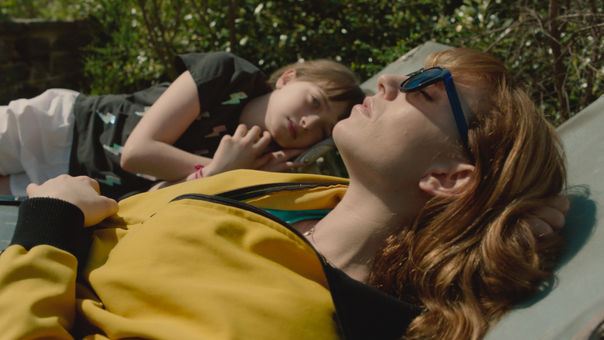Up Down Fragile
By Christopher Small

Film still from BARRAGE © Red Lion
Laura Schroeder’s filmic approach in BARRAGE (Berlinale Forum) presents as many obstacles for the inquisitive viewer as it does open-doors and opportunities. Schroeder’s compartmentalisation of her subjects’ bodies – an early scene sees a young girl in the heat of a tennis match spliced into close-ups of hands, arms, and torso – coupled with an overarching feeling of placidity in the way events and emotions dissipate into nothing, eats away at the film’s obvious central tension. She depicts a clash between generations where big feelings are stifled, depression, confusion, and aggression characterise the family members’ interior and exterior lives, and acknowledgement of past trauma is left unspoken.
With three generations of women at play, the emotions are either muted or outsized, either understated or bordering on hysteria. And yet, the sudden emergence of big emotion at intervals throughout is almost frustrating; instead of escalating and accelerating the drama, these moments tend to stick in the air, contrasting the otherwise evasive, half-muttered way that emotions play out in this world.
Of course, one could argue that such is life; that in our world as in BARRAGE emotions percolate and erupt inappropriately, are muffled and abbreviated and surrounded by what looks like total calm. But this stop-start sensation of shifting emotional states and, eventually, the introduction of a kind of warped dream level to the film, does not feel like part of an organic or complex design. Schroeder has a remarkable way of letting scenes play out without calling attention to their length; she is sharp when it comes to focusing our attention on one side of a conversation –editing so that sound becomes an integral part of our perspective on key events – and yet never seems like that much of an avowed formalist convinced of the integrity and immutability of her well-composed frames.
It should be enough to say that this light touch and roundabout way of tackling intensity of feeling is refreshing. But in the end one gets the sense that the whole architecture of the project – an intergenerational crisis of parenting and an equally-monumental crisis of struggling to express feelings candidly – is jeopardised by the exquisite ornateness of its images.

